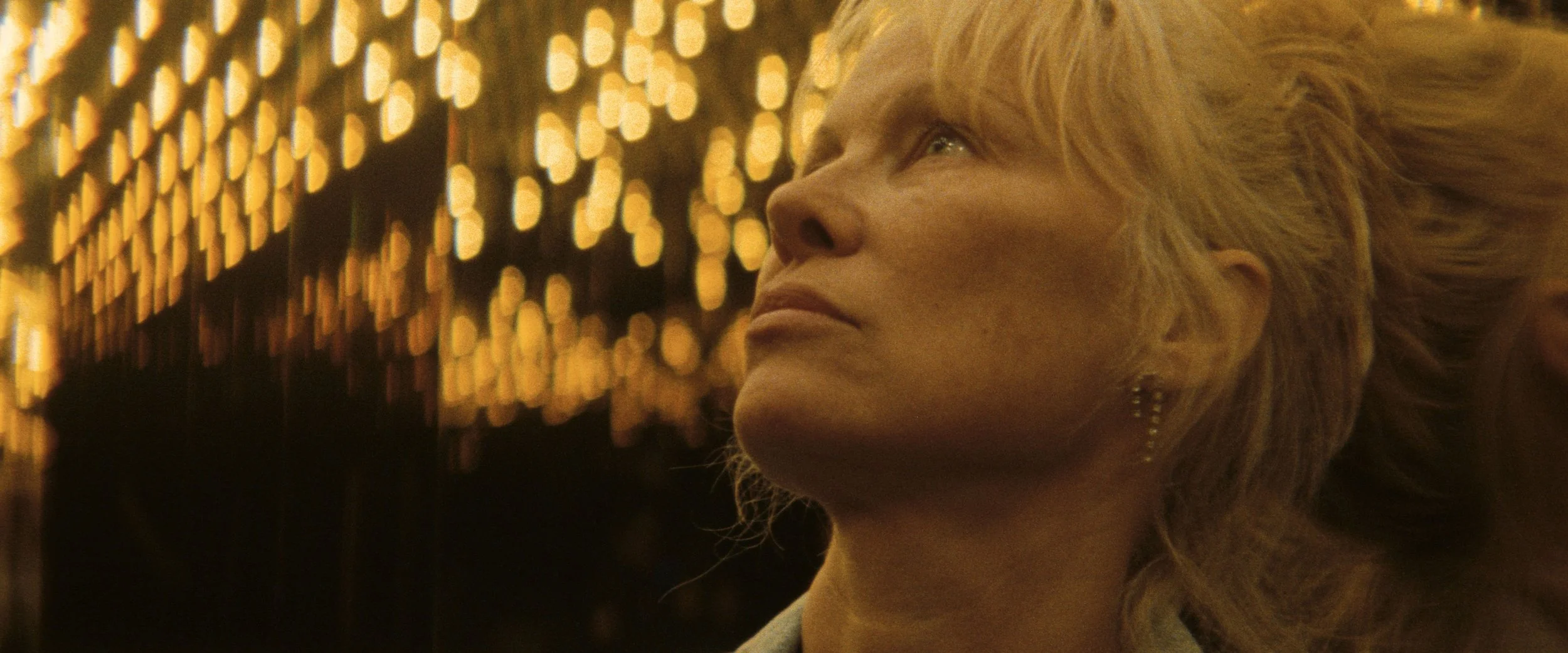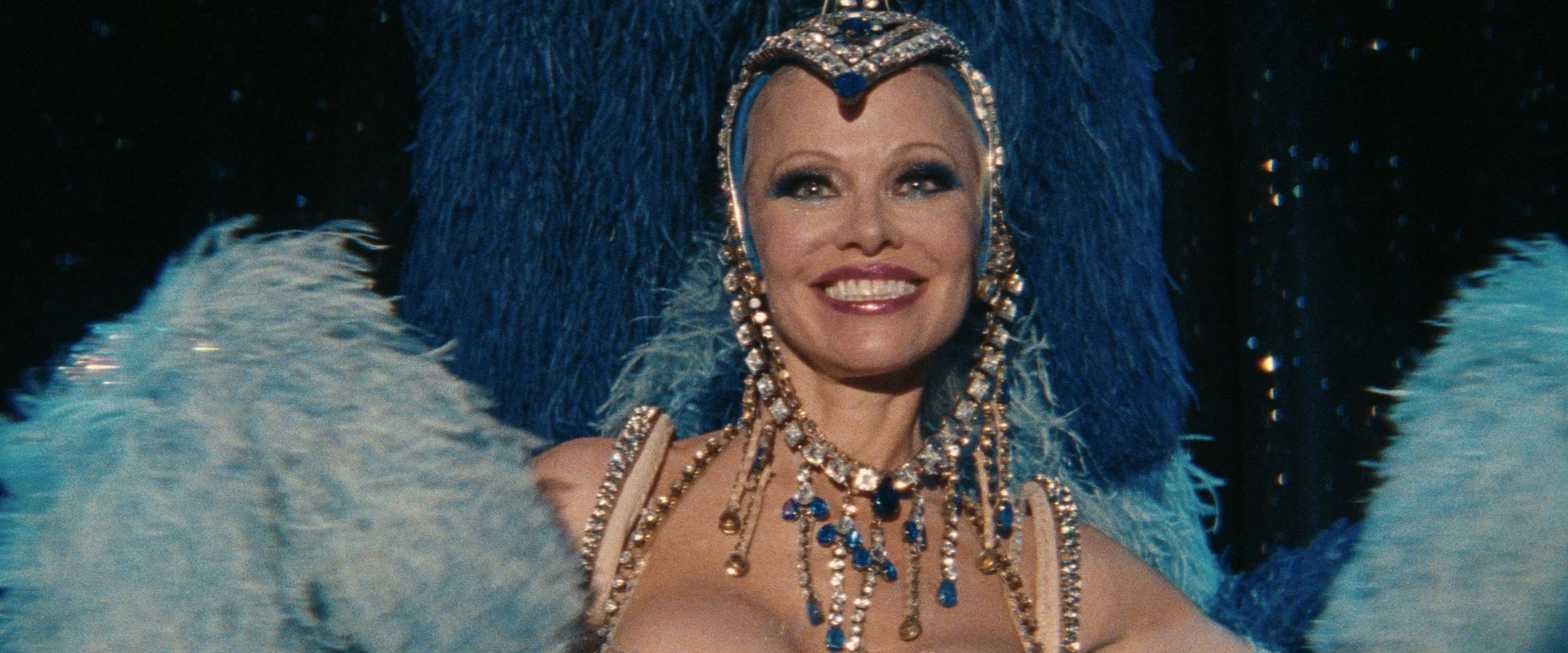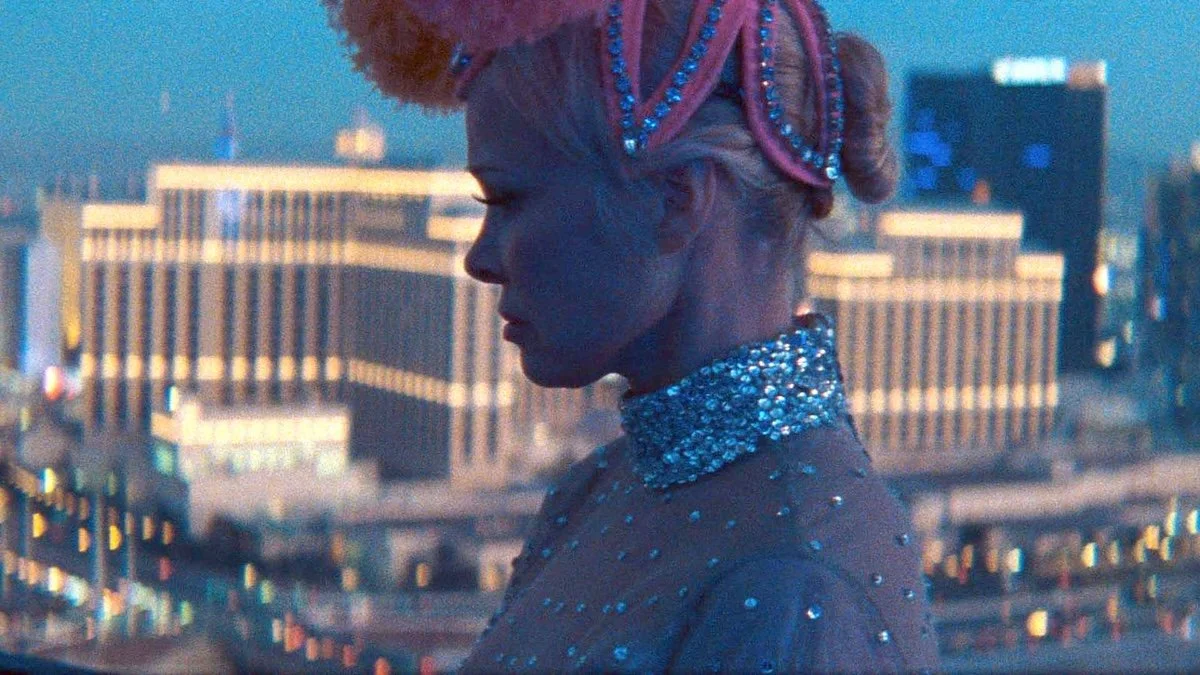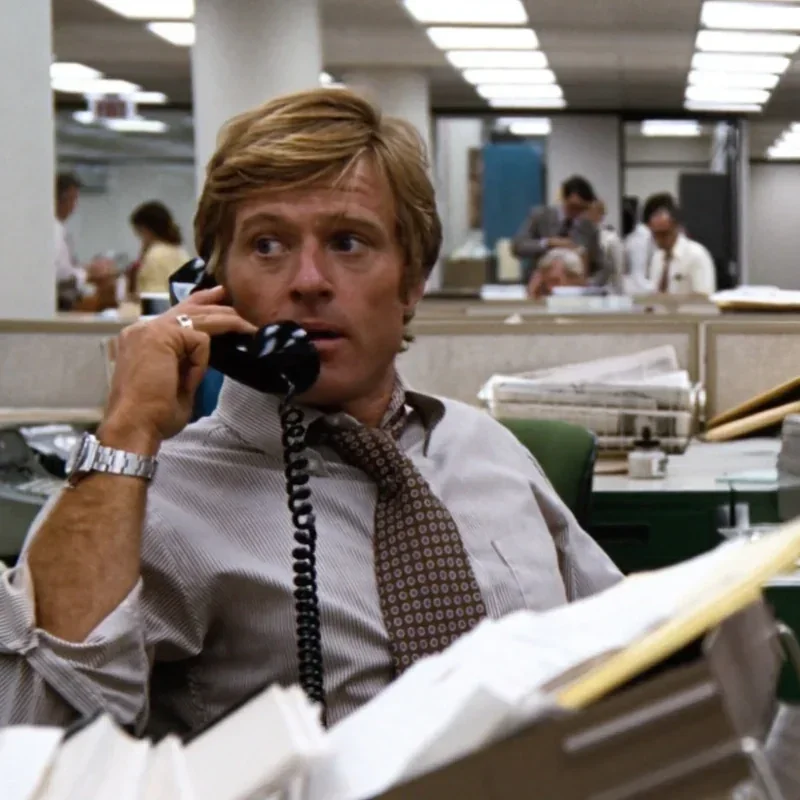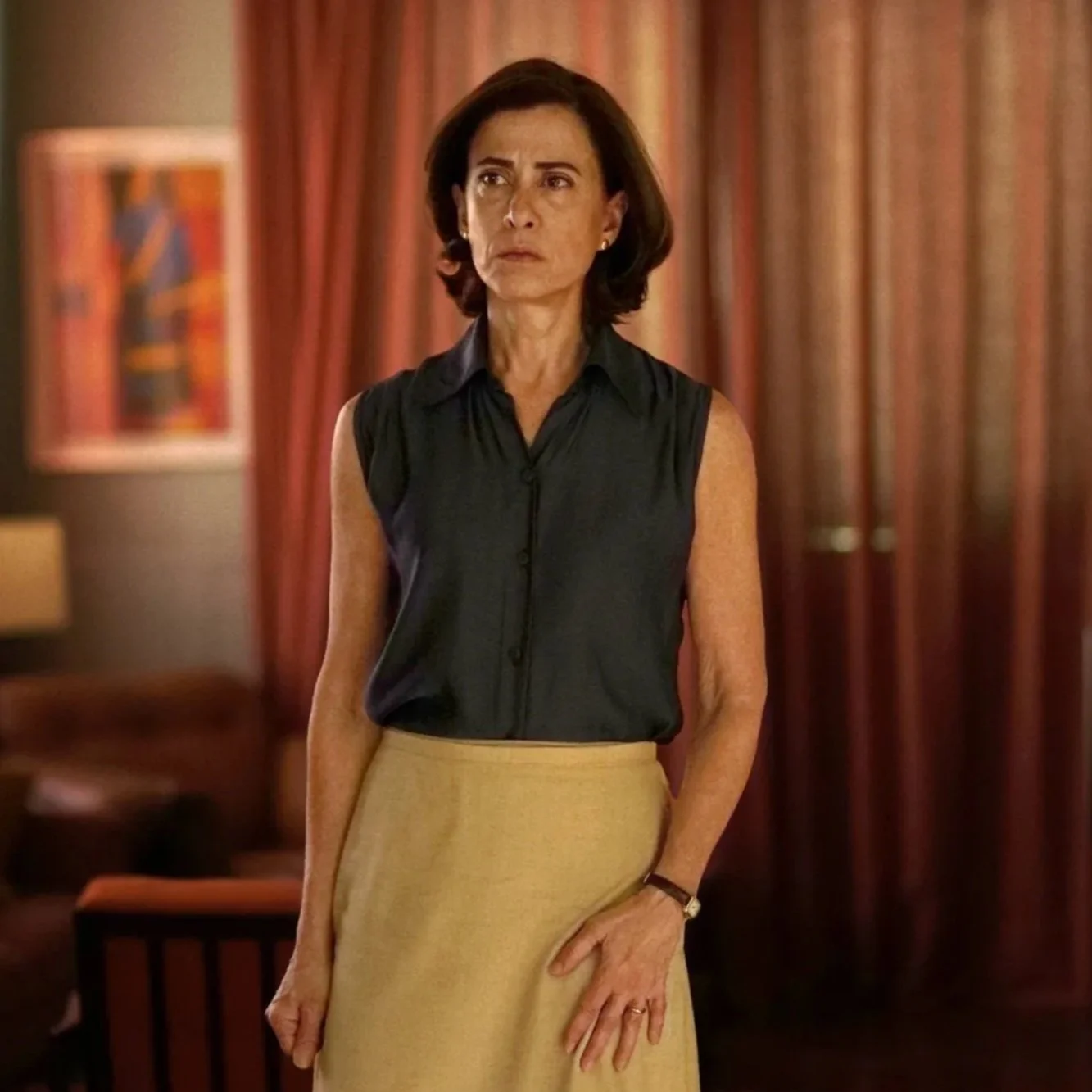The Curtain Falls Twice: Nesting Performance in The Last Showgirl
There is a moment in The Last Showgirl, late in the film, when Pamela Anderson, draped in the sparkle and ache of old Vegas, looks directly at her reflection and hesitates. Not in vanity, but in fear. It is not the fear of age, but of stillness. The performance has ended, and there is nothing but herself looking back. The cruelest moment in a film full of layered cruelties. Not the least of which is how many shows we are expected to perform before we’re allowed to be real.
Shelly, the character Anderson plays, is a former showgirl reckoning with the end of her era, the closing of the curtain not just on her career but on the entire stage upon which she defined her identity. What makes The Last Showgirl such a quietly devastating film is how it builds an architecture of nested performances, a mise en abyme of artifice. This is a film about a show, about the people who put on that show, and about the people who keep performing long after the audience has gone home.
Las Vegas, of course, is a city made entirely of performance. There is no real Las Vegas. Only reflections, projections, simulations. It is a city of facades and re-facades, where nothing is preserved and everything is restored, reupholstered. Made to shimmer again for just a little longer. It is the perfect setting for a meditation on what it means to keep performing in a world that is constantly moving the spotlight elsewhere. In this context, Anderson’s casting is not just apt. It is the entire point.
Pamela Anderson, as an icon, is herself a nesting doll of public performances. She was never allowed to simply be. First the beach body, then the tabloid fixation, then the punchline, then the activist, then the memoirist, then the reflective reclamation. Every step in her public life has been a mask inside a mask. And now, playing Shelly, a woman who spent her life performing a version of femininity that the culture once rewarded but now discards, Anderson delivers something extraordinary: a performance about the exhaustion of performing.
The brilliance of The Last Showgirl lies in how it frames this exhaustion not with bitterness, but with clarity. The camera watches Anderson with patience, reverence, and a kind of ghostly empathy. There are extended sequences where the showgirls rehearse routines in an empty theater, their movements crisp, practiced, hollow. The show must go on. But for whom? In an age of documenting everything, did it even happen if it wasn’t shared online?
These scenes mirror the structure of the film itself. The movie is not just about the show; it is a show. It seduces with neon and choreography, nostalgia and rhinestone drag, but behind it is a profound melancholy. The show we’re watching, Shelly’s story, Anderson’s return, the film’s glossy surface, is itself a glittering disguise for something more uncomfortably honest.
Performance, the film reminds us, is not simply what happens under stage lights. It’s what happens in interviews, in bathrooms, in hospital waiting rooms, in whispered conversations with daughters and estranged lovers. It’s what we do to survive. There’s a brutal scene in which Shelly is asked to return for one final performance. Not for money, but for memory. An invitation wrapped in manipulation, and Anderson’s reaction, a tight smile, a hollow laugh, a slow nod, is its own devastating monologue.
Crucially, The Last Showgirl is not interested in redemption arcs. It is not about Shelly reinventing herself or finding a new passion. It is about endings. And performances, as the film insists again and again, are marked not by how they begin, but how they end.
A showgirl's life is a lesson in repetition. The same steps, the same gestures, the same smile. Night after night. But a life cannot be repeated. The finality of age, of relevance, of visibility, these are not things you rehearse for. You just arrive one day and realize no one is calling your name anymore.
In that light, The Last Showgirl becomes something far more than its premise suggests. It is an elegy for all the performances that never got applause. For the people who kept the show running, offstage, in shadows, when the audience had long since left.
Anderson's performance is laced with history. Her own and ours. We are watching someone who once performed femininity as national spectacle now perform its aftermath. The performant lines around her eyes do not betray her. They reveal her. And when she dances again, it is not to impress, but to remember.
There’s a daughter in the film, of course, there’s always a daughter, and she’s trying to understand who her mother really is. Not the feathers and heels, but the woman underneath. The heartbreak of their scenes together is that Shelly doesn’t know either. How could she? When your whole life has been about becoming something for others, the question of who you are when no one is watching becomes unanswerable.
The Last Showgirl ends not with a triumphant return, but with a whisper. Shelly, finally offstage, finally alone, finally not needing to be seen, sits in silence. The city glows behind her. She is not performing. She is simply exhausted, existing. And somehow, in that moment, it feels like the most radical thing the film could do.
We live in an age of endless performance. Online, at work, in relationships. We curate, we rehearse, we sell. Even authenticity has become a kind of costume. What The Last Showgirl dares to ask is: what happens when the stage disappears? Who are we when there’s no audience left?
The moral of the film, if it has one, is devastatingly simple: every performance must end, and the most honest thing we can do is to let it. Not to rewrite it. Not to spin it into something palatable or profitable. But to sit with its silence.
In that silence, The Last Showgirl finds something rare. A dignity. Not the cheap kind sold on The Strip’s souvenir shops, but the kind that comes from knowing you gave everything, night after night, even when the crowd forgot to clap.
Pamela Anderson gives the performance of her life in this film not because she transforms, but because she refuses to. She remains complicated, unfinished, luminous. The last showgirl, yes. But also the first to stop dancing.
Disclosure: This article is an experiment created with generative research tools trained on my previous archive of writing. It relies upon a number of online sources for its original hypothesis as well as the assembly of narrative conclusion. It is an experiment in crafting a detailed set of instructions sufficient to prompt an LLM to generate a topic of esoteric interest based on my own interest in film criticism, perform a deep analysis upon these topics, and assemble them into a coherent, informed set of thoughts. I find the results a fascinating means of surfacing new and interesting threads of curiosity. I hope you do too.



